When I was planning the Kyoto trip, I wasn’t sure if Uji should be on the itinerary. Sure, it has the famed Byodoin and Uji tea, but it’s a good 30-minute train ride away from Kyoto. With so many amazing sites within the city that I already can’t fit into my itinerary, do I really…Continue Reading “[Kyoto] Uji 宇治”
After visiting Kinkakuji and Ryoanji, we boarded the Keifuku trains for Arashiyama, a touristy but still very pleasant district in the Western outskirts of Kyoto. The area has numerous temples, shops, cafes, and restaurants, all centering around the Togetsukyo Bridge and Keifuku Arashiyama Station. Come here for a relaxing afternoon away from the city.
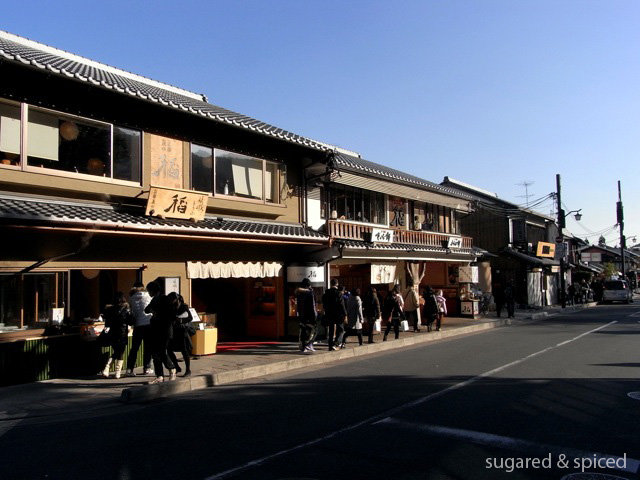
Right outside the Keifuku train station is a roll cake (i.e. Swiss roll) specialty shop called Arinco. We tried a thick slice of their delicious matcha roll cake, which can also be purchased by the roll (¥950/roll) or as a “roll sand”, which is a roll cake sandwich. See their website here.
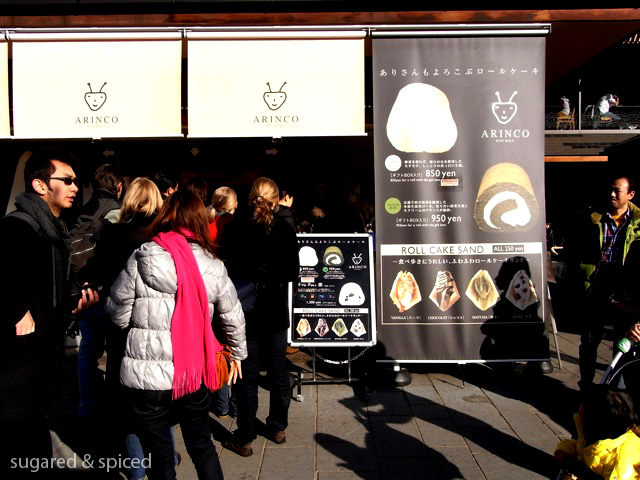
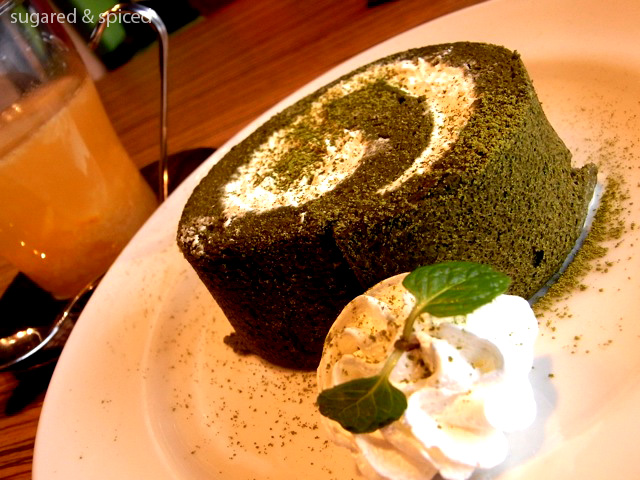
After the sweet fix, we headed for Tenryu-ji, which is ranked number one among the “Top Five Zen Temples in Kyoto”. For more pictures of the majestically beautiful Tenryu-ji, see this post.
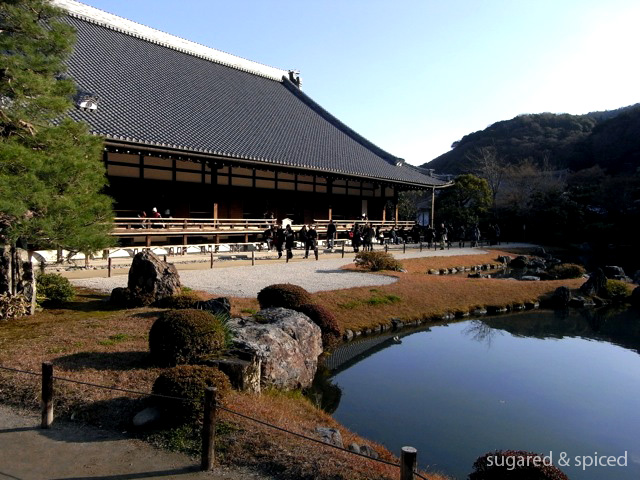
Tenryu-ji 天龍寺
Add: 68 Saga Tenryuji Susukinobaba-cho, Ukyo-ku, Kyoto
Tel: 075-616-8385
Hours: [Apr-Oct] 8:30am-5:30pm [Nov-Mar] 8:30am-5pm
Price: ¥500
Website: http://tenryuji.org/
Visited: Nov 2010
If you travel to Arashiyama (嵐山), Tenryu-ji would undoubtedly be on your list of places to visit. It’s ranked first among the “Top Five Zen Temples” in Kyoto and is also a UNESCO World Heritage Site. I honestly don’t remember too much about the design and history of this particular temple complex (it is, after all, our 3rd temple for the day), other than the fact that it is majestically beautiful. Let’s just proceed with the pictures and let those speak for themselves.
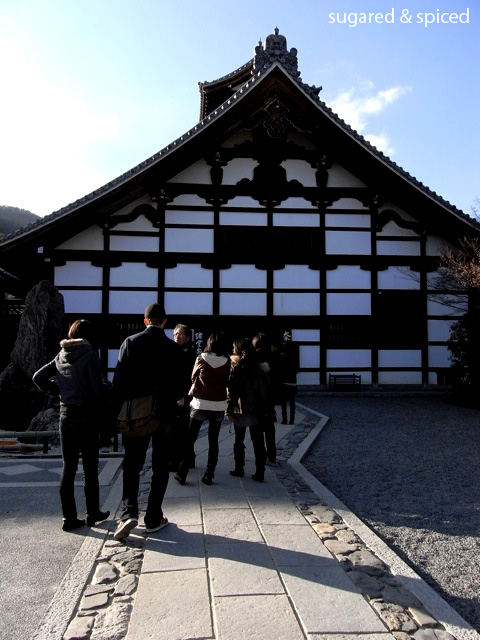
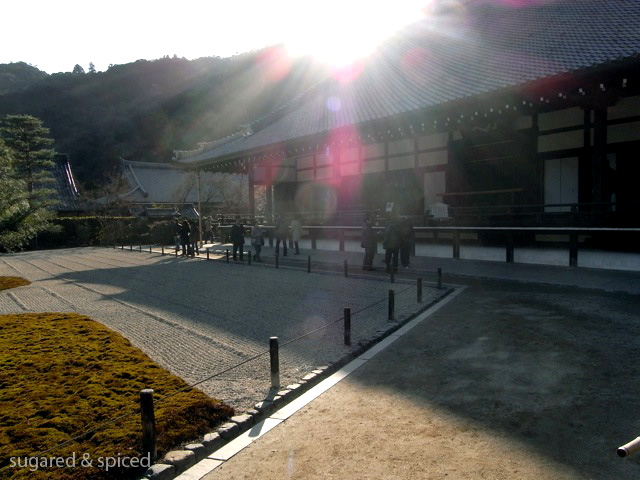
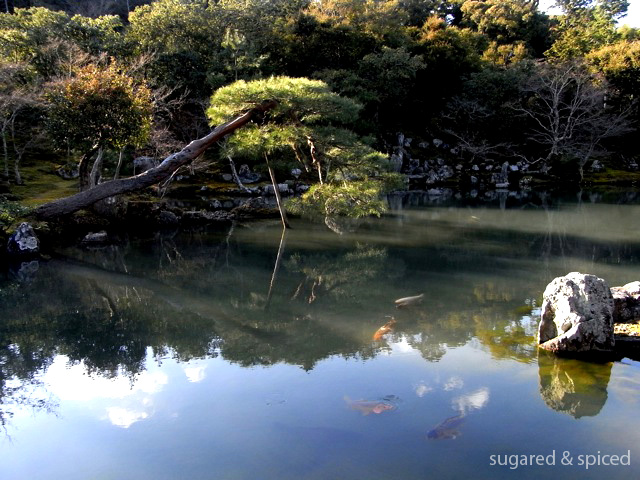
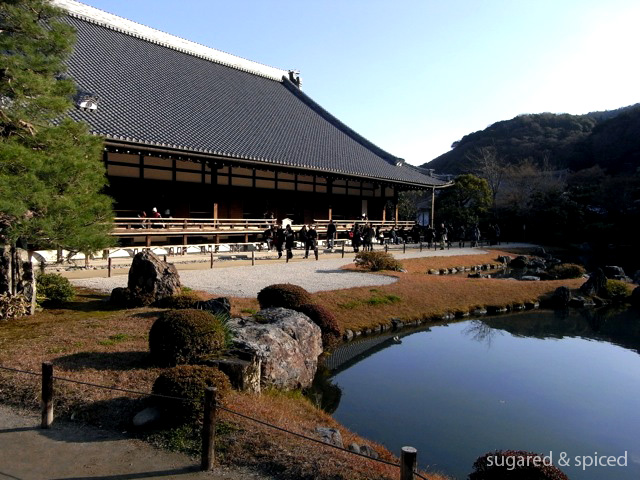
Fushimi Inari Taisha 伏見稻荷大社
Add: Fushimi-ku, Kyoto 京都市伏見区
Tel: 075-641-7331
Price: Free
Website: http://inari.jp
Visited: Nov 2010
On our third day in Kyoto, we visited the spectacular Fushimi Inari Taisha, a site with thousands of torii shrines dedicated to Inari, the Shinto god of rice. The trail from the main shrine, located at the bottom of the hill, to the inner shrine, located at the middle of the mountain, is about a two-hour round trip. Happy hiking!
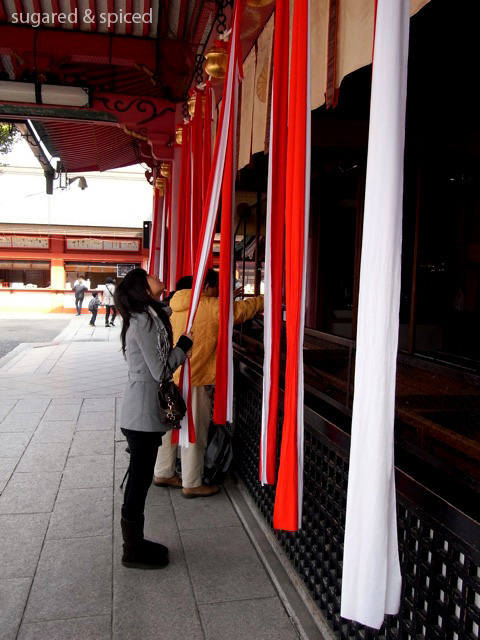
At the bottom of the hill is the main shrine. According to my Japanese friends, this is what you do: at the offering hall, throw a coin into the offering box, bow deeply twice, clap your hands twice, bow deeply once more and make your prayers. If there is a gong or a bell, ring it (this is my favorite!) before praying in order to get the gods’ attention.
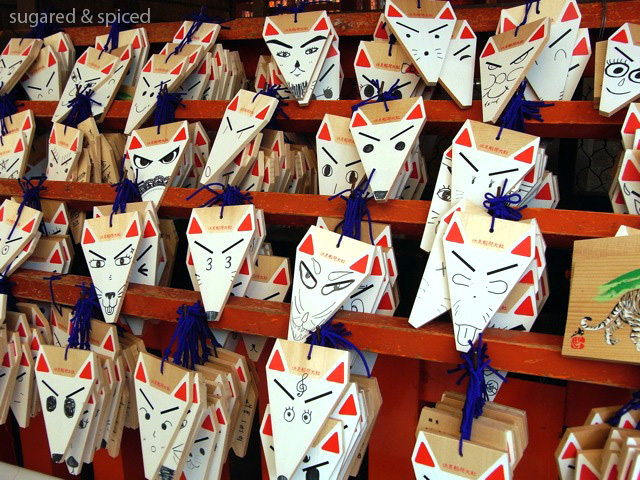
There are other fun stuff to do at the shrine. There’s the ema, wooden plates on which you can write your wishes and then leave at the shrine for the wishes to come true. There’s the omikuji, fortune telling paper slips that are randomly drawn and contain predictions ranging from daikichi (very good luck) to daikyo (very bad luck). Tie the pieces of paper to a fixture at the shrine, so good fortune will come true and bad fortune can be averted.
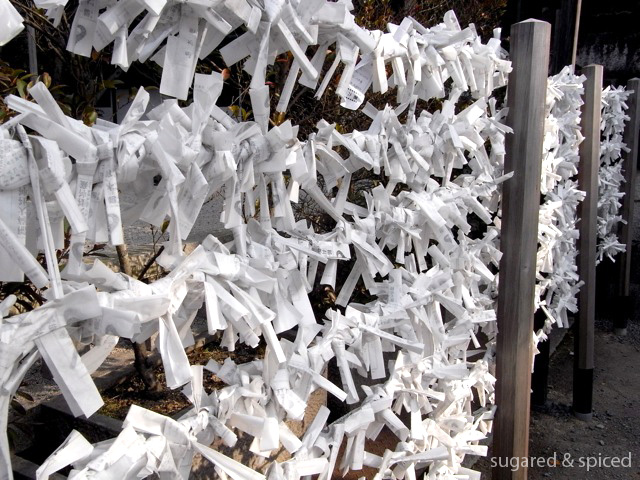
The most distinguishing feature if Fushimi Inari Taisha is of course the thousands of torii. You’ll also see fox statues here and there, as foxes were thought to be the messengers of Inari.
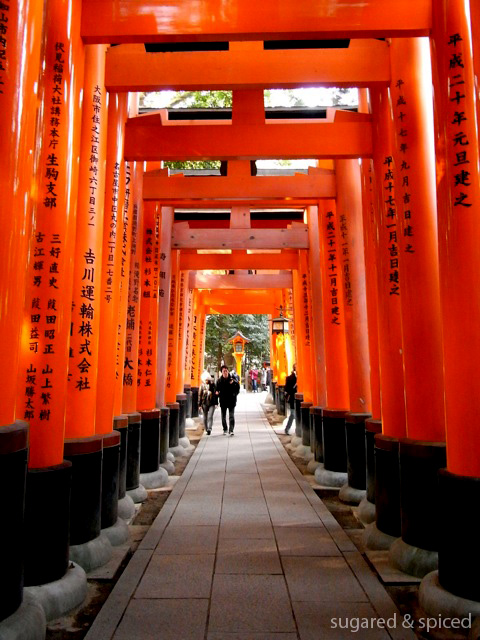

On our 2nd day in Kyoto, we spent the whole afternoon and evening in Gion 祗園, an area where the geishas reside and entertain. Supposedly the best time to see geishas is after 6pm when they begin to go out to entertain for the evening, but we were not so lucky even though we lingered…Continue Reading “[Kyoto] Gion 祗園”
Ryoan-ji 龍安寺
Add: 13 Goryoshita-machi, Ryoan-ji, Kyoto
Tel: 075-463-2216
Hours: [Mar-Nov] 8am-5pm [Dec-Feb] 8:30am-4:30pm
Price: ¥500
Website: www.ryoanji.jp
Visited: Nov 2010
Ryoan-ji’s “Zen garden” is another one of my favorite spots in Kyoto. There are no trees in this dry landscape garden (kareisansui), just 15 irregularly shaped moss-surrounded rocks of varying sizes, arranged in white gravel that is raked every day. The rocks are placed so that, when looking at the garden from any angle, only 14 are visible at one time. It is said that only through attaining enlightenment would one be able to see the fifteenth boulder. Come try it yourself?
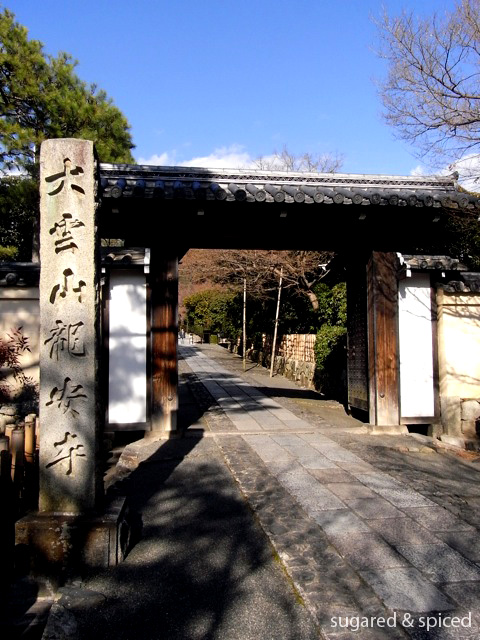
So why 15? In the Buddhist world, the number 15 denotes completeness. To have a whole and meaningful experience, one must have a total view of the garden, which is not possible in the conditions of this world.
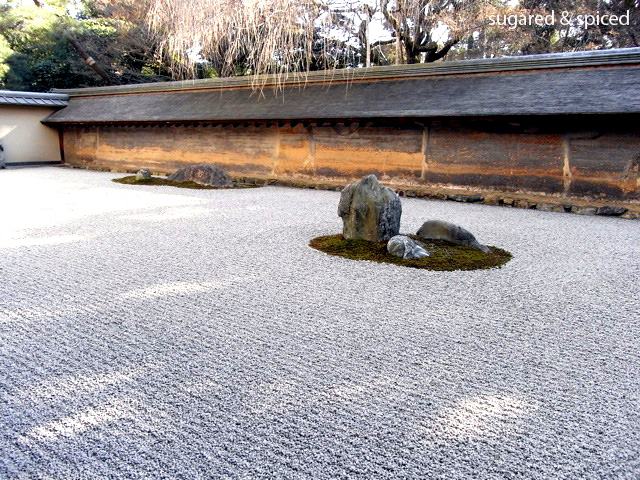
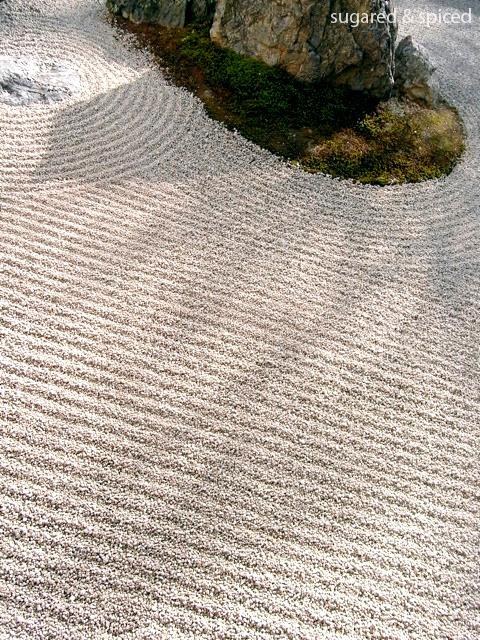
The meaning of the garden is not explicit and is up to each viewer to find meaning for him/herself. Do visit early since the garden becomes crowded in the afternoon, and you most definitely won’t have a serene moment for contemplation and introspection.
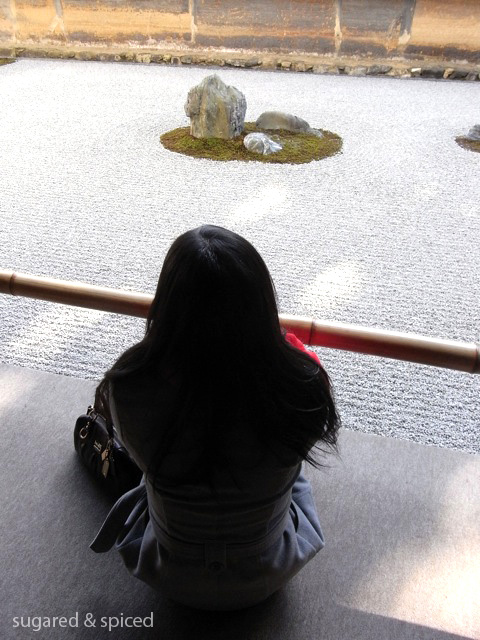
Kinkaku-ji 金閣寺
Add: 1 Kinkakuji-chō, Kita-ku, Kyoto / 〒603-8361 京都市北区金閣寺町1
Tel: 075-461-0013
Hours: 9am-5pm
Price: ¥400/person
Website: www.shokoku-ji.or.jp
Visited: Nov 2010
Kinkaku-ji (金閣寺 Temple of the Golden Pavilion), also known as Rokuon-ji (鹿苑寺, Deer Garden Temple), is a Zen Buddhist temple and one of the 17 World Cultural Heritage sites in Kyoto. It was built as the retirement villa of shogun Ashikaga Yoshimitsu and is modeled according to the descriptions of the Western Paradise of the Buddha Amida. The most distinguishing structure in the temple complex, the Golden Pavilion, has the two floors completely covered with pure gold. Talk about lavishness.
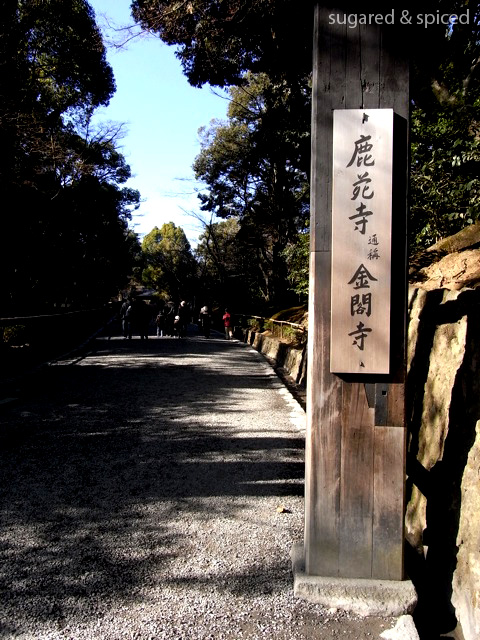
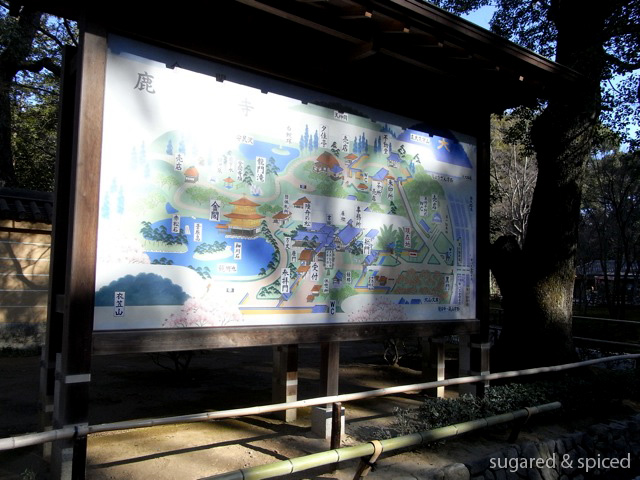
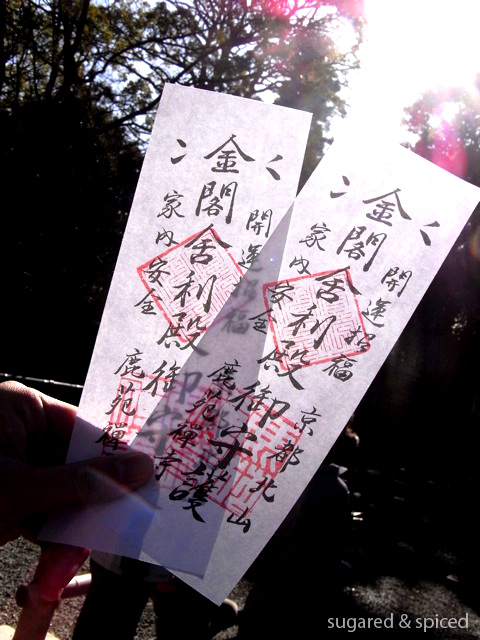
Kinkaku-ji’s history dates to 1397, but the present Golden Pavilion (金閣) structure was rebuilt in 1955 and subsequently underwent various reconstructions. The top two stories of the pavilion emit a warm glow in the sun as they are completed covered with pure gold leaf. More mesmerizing yet, the Mirror Pond upon which the pavilion was built on produces a perfect reflection of the golden extravagance on a clear day. Absolutely beautiful.
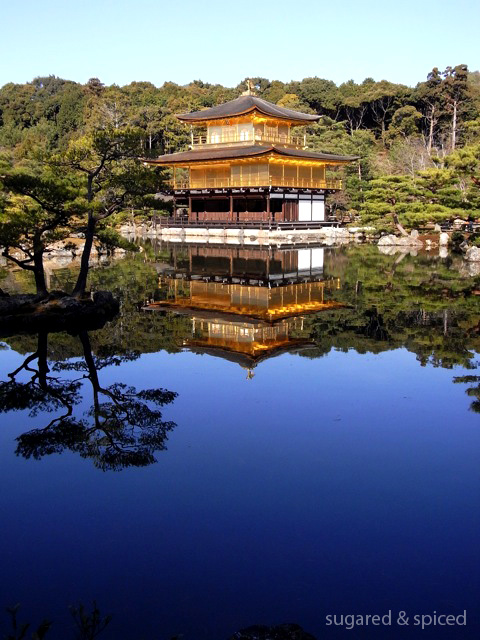
Kiyomizu-dera 清水寺
Add: 1-294 Kiyomizu Higashiyama-ku, Kyoto
Hours: 6am-6pm
Price: ¥300/person
Website: www.kiyomizudera.or.jp
Visited: Nov 2010
Among the hundreds of temples and shrines in Kyoto, Kiyomizu-dera (Pure Water Temple) stands out as a must visit. Originally built in 798 and reconstructed in 1633, the temple is best known for its wooden stage that juts out 13 meters above the hillside below, offering an impressive view of cherry blossoms in the Spring or maple leaves in the Fall with Kyoto city in the backdrop.
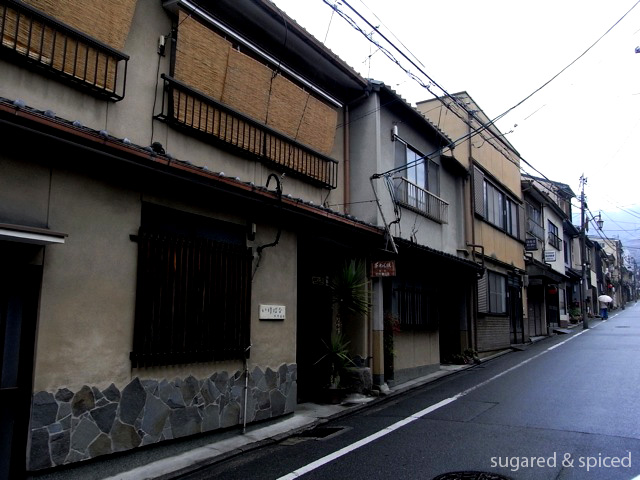
Kiyomizu-dera is extremely popular even during off seasons, so we made that our first destination in the morning to beat the crowd. To get there, take bus 100 or 206 (15 minutes, ¥220) from Kyoto Station, get off at Kiyomizu-michi bus stop, then take a 10-minute uphill stroll via Chawan-zaka (茶わん坂) to reach Kiyomizu-dera.
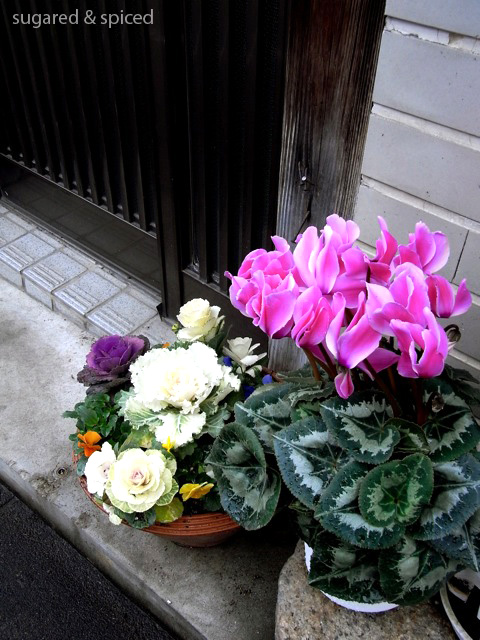
At the entrance of Kiyomizu-dera, we rinsed our mouths and hands at the stone water basin. This is a common practice at all Japanese temples and shrines, since it is believed that such purification is necessary before entering sacred temple grounds.
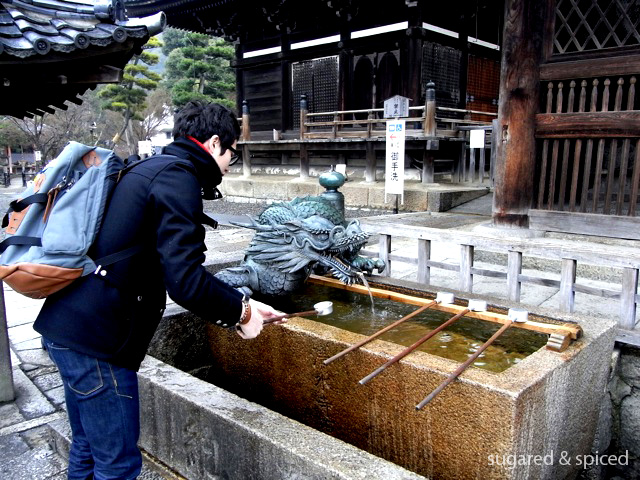
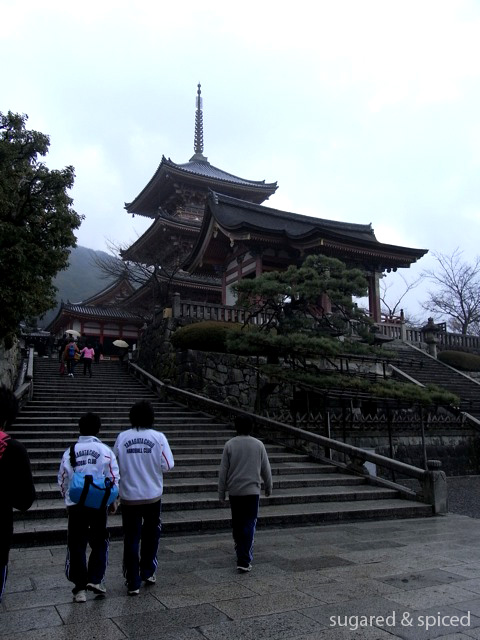
\Nakamura Tokichi 中村藤吉
Add: 10, Ichiban Uji , Uji-shi, Kyoto / 京都府宇治市宇治壱番十番地
Tel: 0774-22-7800
Hours: [tea shop] 10am-6pm [cafe] 11am-6pm
Website: www.tokichi.jp
Price: [set meal] ¥980-1,100 [desserts] ¥720-800
Uji, a tranquil and charming town 30 minutes outside of Kyoto, is known for having the best green tea in all of Japan. Among the many tea roasters and sellers, 150-year-old Nakamura Tokichi is especially well-known not just for serving excellent tea, but also a range of tea-flavored desserts that will delight even those who are not in the habit of tea drinking.
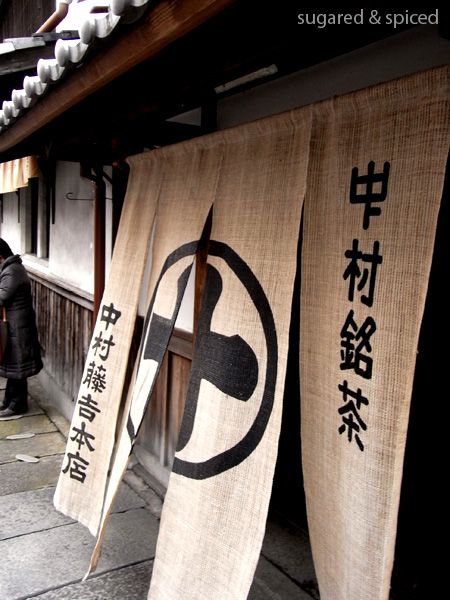
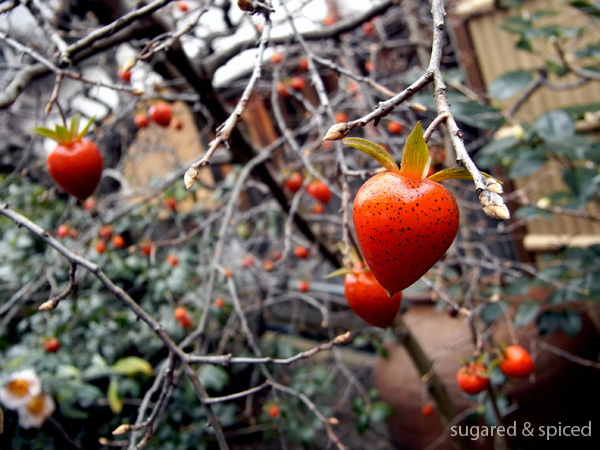
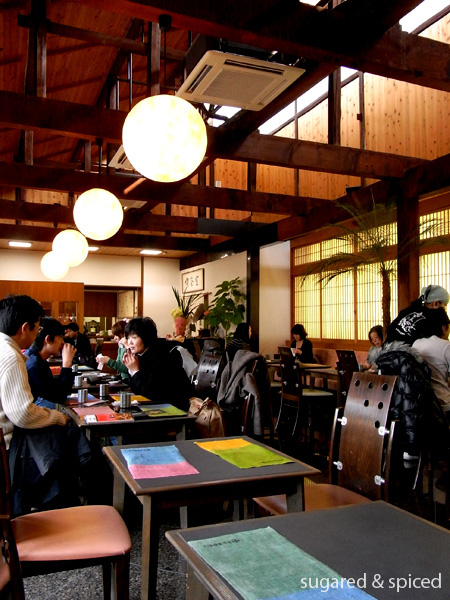
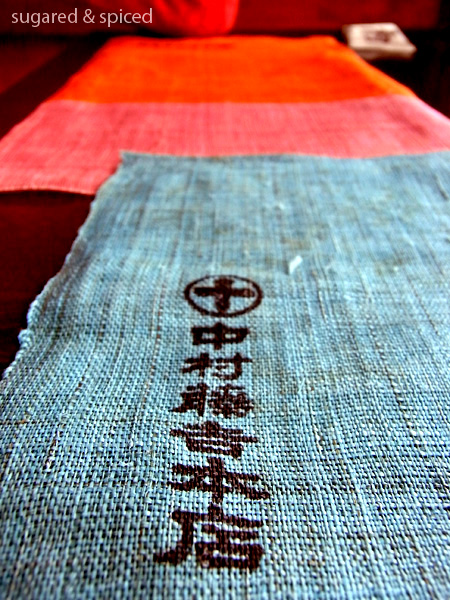
Okutan 奧丹
Add: 3-340 Kiyomizu, Higashiyama-ku, Kyoto / 京都市東山区清水3-340
Tel: 075-525-2051
Hours: 10:30am-5pm (Closed on Thursdays)
Website: webkyoto.com/okutan/
Price: Yudofu set meal ¥3,150; traditional tofu meal ¥4,200
Kyoto is to tofu what Naples is to pizza. It goes without saying that when in Kyoto, you have to have a tofu meal. This is not what you can get as prepackaged squares from supermarkets, we are talking about delicate handcrafted tofu, produced every morning in small shops by artisans who have been making tofu for decades. Okutan, one of the oldest and most authentic tofu restaurants in Kyoto, is a perfect place to have a tofu meal. Founded about 350 years ago as a vegetarian restaurant serving Buddhist monks, Okutan serves just two things: a tofu set meal (yudofu) and a traditional tofu set meal.
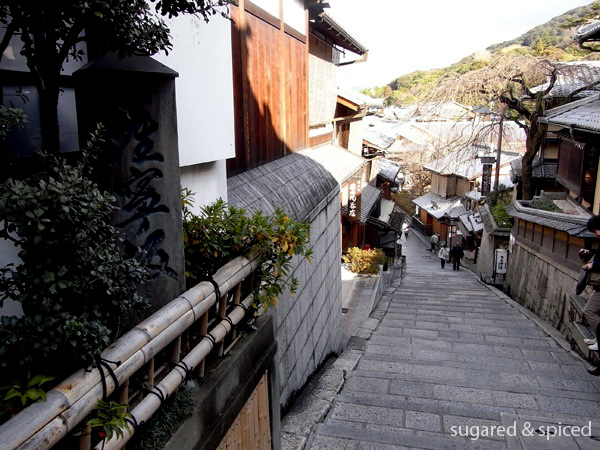
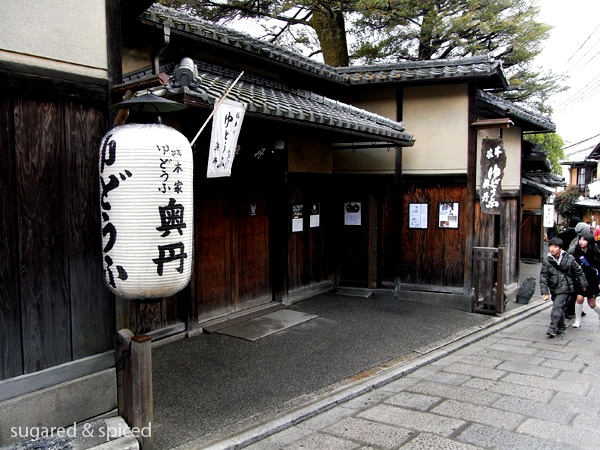
Okutan is located near the crossover of sannen-zaka (三年坂) and ninen-zaka (二年坂). If you visit Kiyomizu-dera (清水寺) early in the morning, which you should as the famed temple gets crowded later in the day, Okutan would be an ideal place for lunch. Come early at 11:00am to avoid the wait.
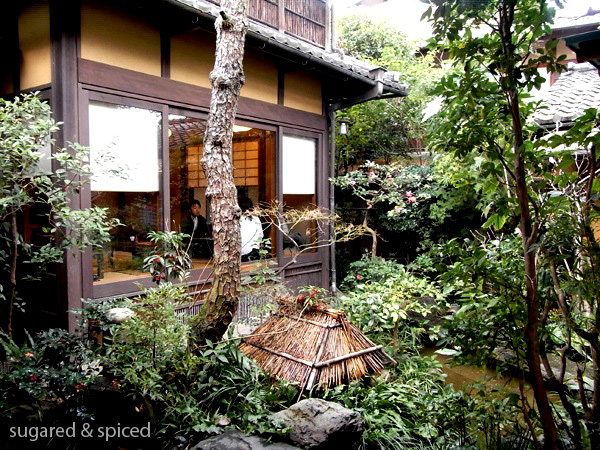
After putting our shoes away at the entrance, we were led through the garden into a spacious tatami room. The huge windows lets in plenty of natural light and takes in the garden in plain view. Hot tea was promptly served, a godsend for us after a whole morning out in the cold Kyoto December air.
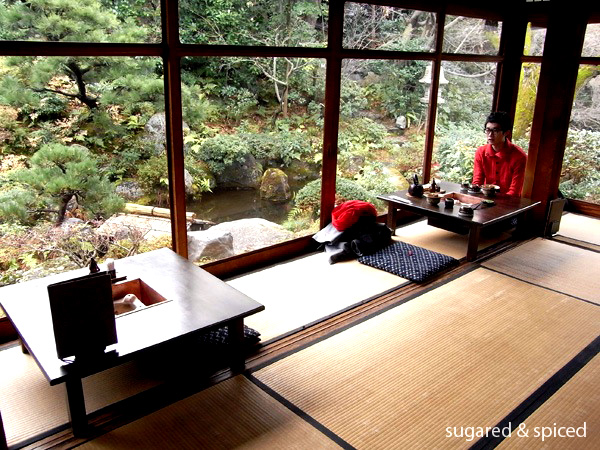
![[Kyoto] Uji 宇治](https://www.sugarednspiced.com/wp-content/uploads/2010/11/RIMG4823.jpg)
![[Kyoto] Gion 祗園](https://www.sugarednspiced.com/wp-content/uploads/2010/11/RIMG4409.jpg)